From hot air ballooning to visiting tombs of long dead kings, the central Egyptian city of Luxor is an exotic blend of adventure and ancient history. The self-proclaimed world capital of tourism feels like a world away from the crowded, loud and hazy streets of Cairo. In Luxor, the roads are clean and uncrowded, and the River Nile runs majestically through the central Egyptian city.
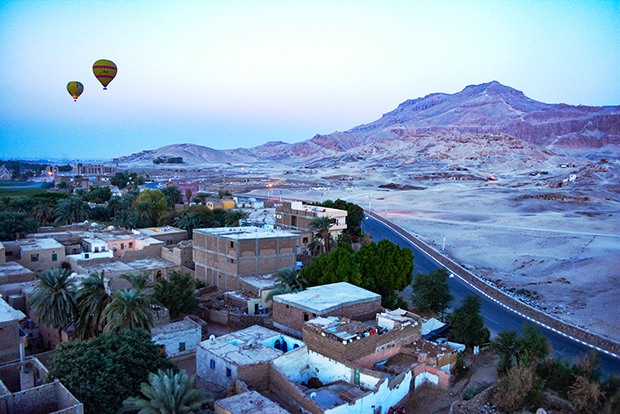
Luxor serves as a base to explore many key sites in Egypt – and you can also get a bird’s eye view of it all from the basket of a hot air balloon as the sun rises over the desert.
Valley of the Kings
The Valley of the Kings was the highlight of my trip to Egypt. In the 54 countries I’ve visited to date, it was the first time I’d seen tombs like this, and it was fascinating. The decorated tombs of Egypt’s rulers are beautiful, hidden in a valley behind soaring golden mountains.
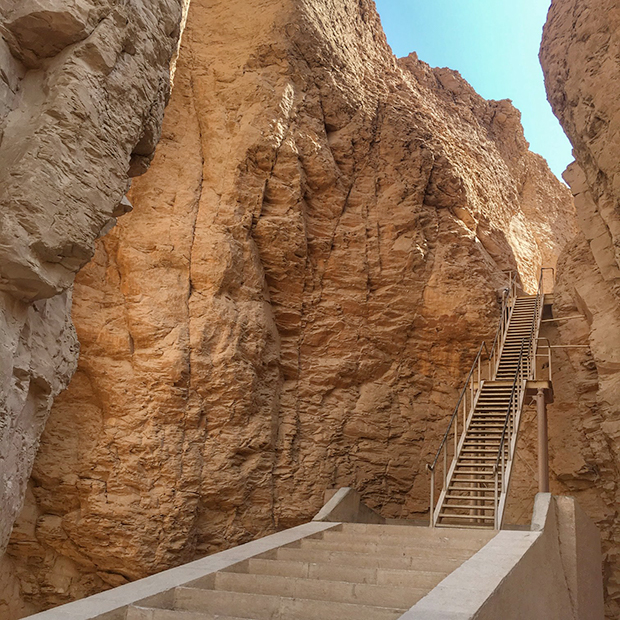
As you wander through the valley and past the many tombs, you’ll feel like you could be in an Indiana Jones movie, searching for treasure. Most of the kings from Ancient Egypt’s 18th, 19th and 20th dynasties (11th to 16th century BC) were entombed in this valley. Work started on the tombs while the rulers were still alive, and upon their death, the ruler was mummified, placed in an elaborate coffin, and the tomb filled with treasures and furniture that the ruler would need in the afterlife. Entry into the Valley of the Kings allows you to see three of the 13 tombs open for viewing. There’s 63 tombs that have been uncovered in the valley so far. You can select the three tombs you want to see but the most recommended are the tombs of Thutmose III, Twosret and Sethnakht, and Merenptah.
The first tomb I visited was the Thutmose III tomb. To get into the tomb, you walk down several flights of stairs, over a bridge across the good room – a trap for tomb robbers – and into two decorated rooms. This tomb is one of the earlier tombs and not as elaborate as some of the others. There are two main rooms, and their walls are filled with depictions of stick men like figures.
The tomb of Twosret and Sethnakht is a combined tomb. Twosret was the wife of the Pharoah Seti II. Seti II died, but then his successor died shortly after and Twosret took power. But then Twosret died not long after she took power, and Pharoah Sethnakht was next in line. Sethanakht believed that women could not be a ruler of the kingdom and decided to takeover Twosret’s tomb for himself, and he added a second burial chamber at the rear of the tomb. The combined tomb is a colourful one with star decorations on the ceiling, and detailed images of Twosret and Sethnakht with the gods along the walls of their respective burial chambers.
The tomb of Merenptah was the last tomb I visited, and it was also my favourite. Merenptah was the 13th son of Ramses II. It is the second largest tomb in the valley and gradually descends via a narrow and steep gangway. The decorations and images on the walls of the tomb were the most colourful and elaborate, and I spent the most time here looking at the beautiful illustrations depicting stories from Egyptian mythology.
You can also choose to pay extra to see the tombs of Ramses III and Tutankhamen. It’s recommended to pay to see the tomb of Ramses III as you can see the contents of Tutankhamen's tomb in the Egyptian Museum in Cairo. Photos are not allowed inside any of the Valley of the Kings tombs. On the way to the Valley of the Kings, a good photo stop is the giant statues at the Colossi of Memnon.
Hot Air Ballooning
If you don’t mind a 4am start, then hot air ballooning is a must do on your visit to Luxor. As the sun rises over the desert, you’ll ascend into the soft blue and pink skies and gaze down at ancient temples, villages, and the ridge of the Valley of the Kings. You’ll float over the houses of locals and wave to excited children as they wake up and see a hot air balloon sailing over their heads. From the balloon, you can easily see the temples of Hatshepsut and Karnak.
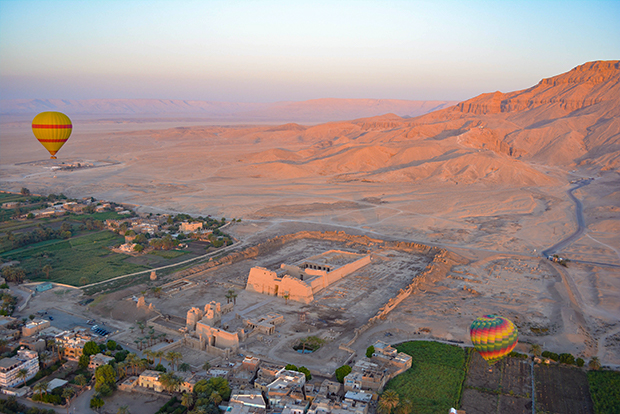
Temples around Luxor
There are three major temple precincts in the Luxor area.
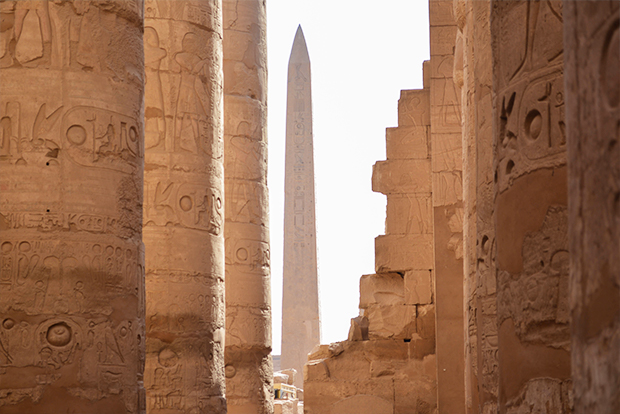
The biggest is the Karnak Temples complex. This complex extends 200 acres and was built over a 2000 year period. One of the key sights within the complex is the Hypostyle Hall which features 134 grand columns. Luxor Temple can be seen from the roadside or you can pay a few dollars to take a wander inside. The eyecatching Mortuary Temple of Hatshepsut is dedicated to the female Pharaoh Hatshepsut and is located beneath the cliffs at Deir el Bahari near the Valley of the Kings. You can see the Mortuary Temple from the Karnak Temple Complex. Walk up the stairs of the temple to get a great view of the surrounding desert landscape.
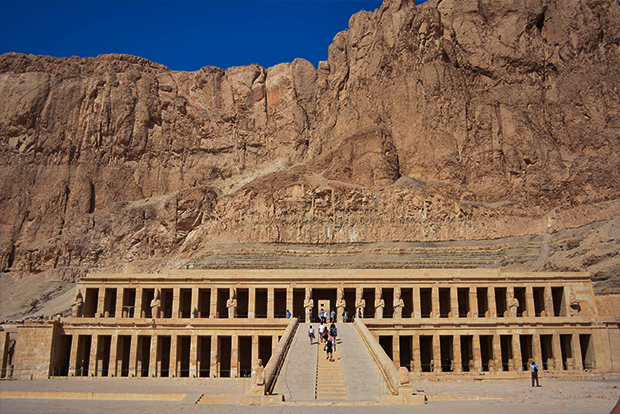
Sailing on the River Nile
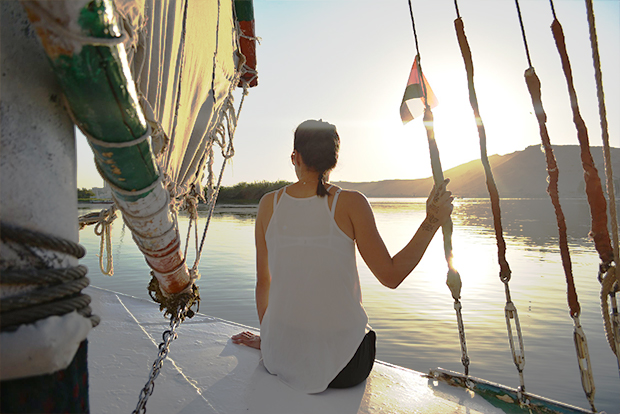
Luxor is one of the Egyptian cities where you can organise a cruise on the Nile River. Many cruise ships operate from Luxor to journey south down the Nile. You can also take a ride on a felucca - a traditional Egyptian sailing boat.
There are many touts peddling felucca cruises along the riverside, but it’s best to organise one with your hotel or through your tour group.
Things You Should Know:
- It’s a long and bumpy drive between Cairo and Luxor, and you may want to consider a tour that flies between Cairo and Luxor. The drive can take on average between 9-12 hours depending on road conditions and checkpoint wait times. You also may be accompanied by a police escort. Also consider that toilet stops may be in gas stations that only have squat toilets, or you may have to make do with a desert stop. Drivers are only able to stop in locations where there is phone reception for personal safety reasons. Bring your toilet paper and hand sanitiser.
- It’s not advisable to visit city areas in Egypt on your own –, particularly as a female. Safety in numbers applies in Egypt. This is mostly to minimise how much you get hassled to buy stuff or give money.
- Tipping is a way of life in Egypt. Tipping your driver and waiter is customary.
- At tourist sites, toilets cost 1 Egyptian pound, and it’s preferable in coin form rather than the 1 pound note. Often toilet guards may ask you as you leave for more money but ignore them once you’ve paid.
- Be wary of guards at tourist sites. They are often hoping for tips and will take any opportunity such as posing for a photo then asking you for money. They will often step into pictures with you and your friends in the hope of a tip.
- All tourist sites require you to pass your belongings such as handbags or camera bags through an X-Ray machine. Their machines are old equipment and may harm any electronic equipment such as your phone, camera or GoPro. You are allowed to pass these devices over the top of the machines, so they don’t go inside.
- Do not drink the water in Egypt. Bottled water is readily available and is best bought from supermarkets or convenience stores.
- Due to the fluctuating value of the Egyptian Pound at the moment, it’s tough to change Egyptian Pounds back to other currencies even at the airport – you can only change money into Egyptian Pounds. So you have to use up all your Egyptian Pounds before you leave the country.
- Egyptian food can be hard on sensitive stomachs. Make sure you pack plenty of Imodium and GastroStop just in case. If you know you have a sensitive stomach, avoid salads and fruits you can’t peel as they may have been washed in the water.
Lisa Owen is a pint-sized Australian following her dreams to travel to as many places as she can, and loves to share her photography, travel hacks, hiking adventures, and food discoveries along the way. At last count, she has travelled to more than 40 countries in between working in public relations and discovering hidden gems in Australia's great outdoors. Instagram: @thelittleadventurer Facebook: The Little Adventurer Australia
The views, opinions and positions expressed by the author and those providing comments are theirs alone, and are meant as travel inspiration only. They do not reflect the opinions of Cover-More Insurance. You should always read the PDS available from your travel insurance provider to understand the limits, exclusions and conditions of your policy and to ensure any activities you undertake are covered by your policy.



